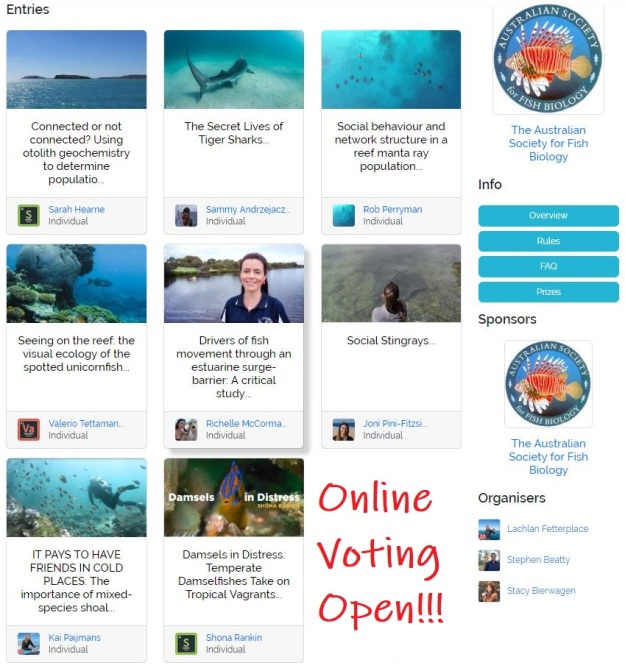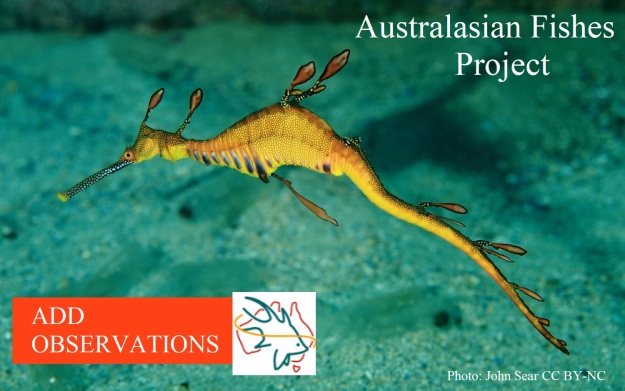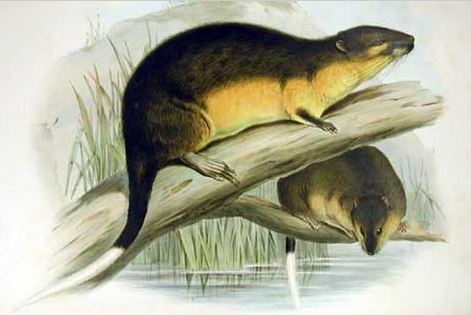
Voting is currently open in the Australian Society for Fish Biology Student Competition in Science Communication awards 2018 (five days left to vote!). This year there is $3000 in prize money up for grabs. Entry is via a short video showcasing the postgrads research and the public vote on senior (PhD candidates) and junior (Masters and Honours candidates) category entries. This year there is also an additional category that will run at the ASFB conference and will include 50% delegate votes and 50% judging panel votes in deciding the winner.
I have been involved in organising the competition the last few years (and as an entrant in the first year) and I have to say that the quality of the videos on offer this year is exceptionally high across the board. They are well worth taking some time to check out.
You can find all the entries and vote in both categories here. And I encourage you to also think about leaving a comment or two on the videos you enjoy – they take a lot of work to put together and getting feedback always helps make it worth it.






